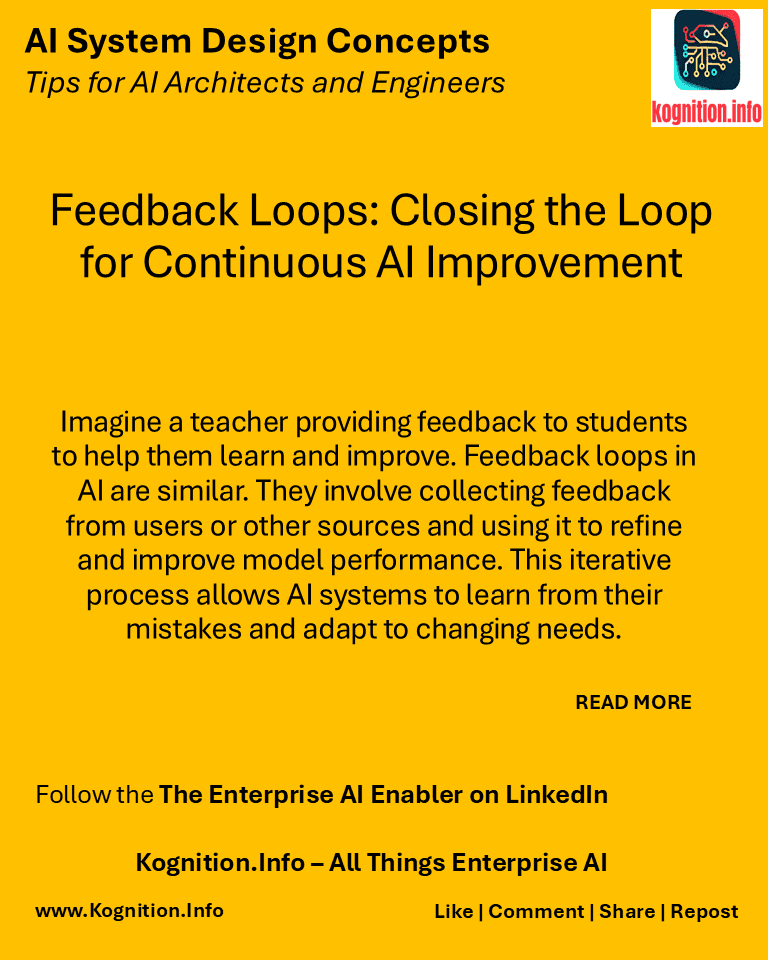
Imagine a teacher providing feedback to students to help them learn and improve. Feedback loops in AI are similar. They involve collecting feedback from users or other sources and using it to refine and improve model performance. This iterative process allows AI systems to learn from their mistakes and adapt to changing needs.
Use cases:
- Improving recommendations: Collecting user feedback on recommended items to personalize future suggestions.
- Refining search results: Using user clicks and interactions to improve the relevance of search results.
- Enhancing chatbot interactions: Analyzing user feedback to improve the accuracy and naturalness of chatbot responses.
How?
- Collect feedback: Gather feedback through user surveys, ratings, reviews, or implicit feedback like user behavior.
- Process feedback: Clean, aggregate, and analyze feedback data to extract meaningful insights.
- Incorporate feedback into training: Use feedback data to retrain models or adjust model parameters.
- Monitor and evaluate: Track the impact of feedback on model performance and user satisfaction.
Benefits:
- Continuous improvement: Enables ongoing refinement and improvement of AI models.
- Enhanced user experience: Tailors AI systems to better meet user needs and preferences.
- Increased accuracy and relevance: Improves the accuracy and relevance of AI-powered applications.
Potential pitfalls:
- Bias in feedback: Feedback may be biased or unrepresentative of the entire user population.
- Feedback volume: Collecting and processing large volumes of feedback can be challenging.
- Delayed feedback: Feedback may be delayed, impacting the timeliness of model updates.
